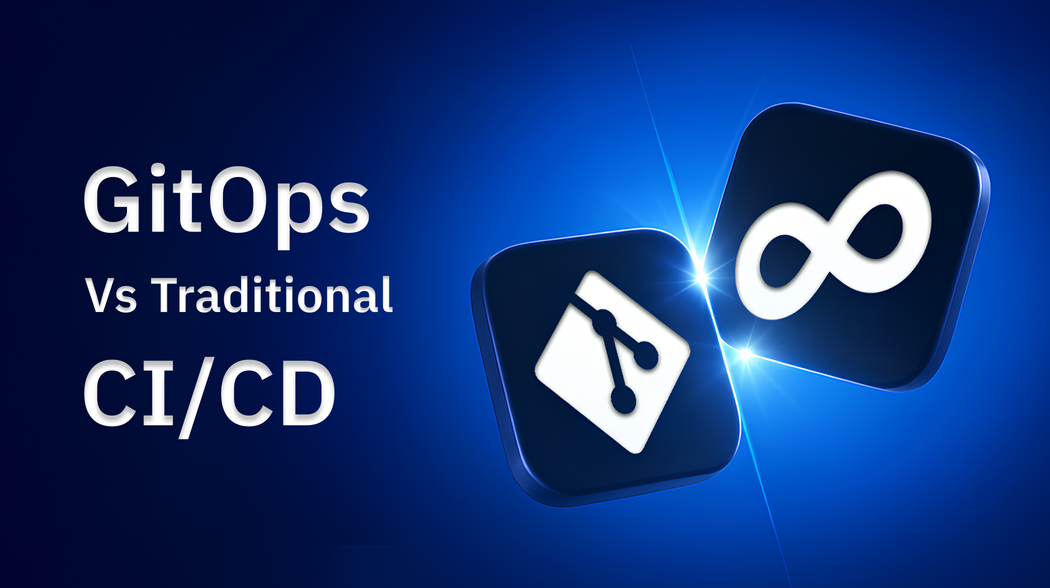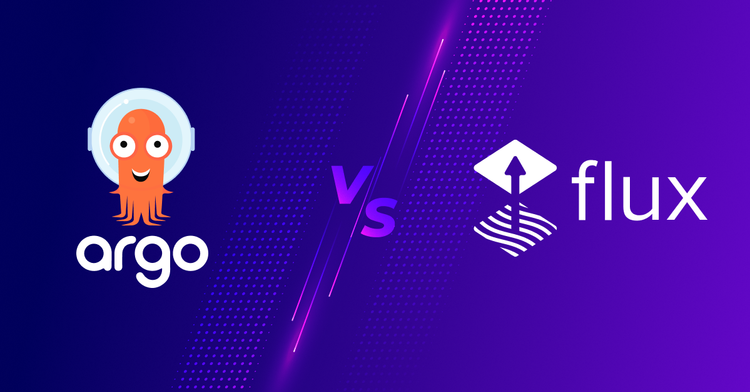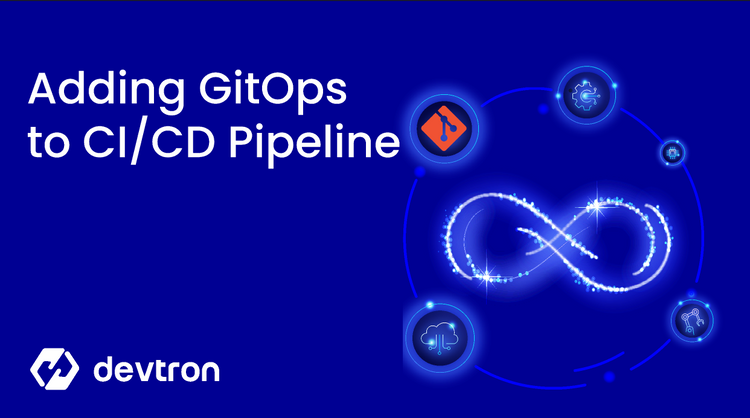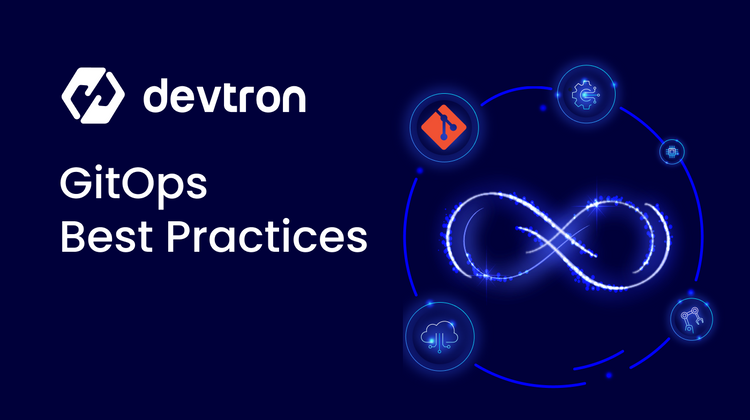Traditional CI/CD pipelines have long been the standard for automating software delivery, where each stage, from build to deployment, is executed sequentially and often controlled by centralized tools. These pipelines push changes directly to target environments, requiring manual scripting or plugin-based configurations to manage deployments.
GitOps is a modern approach to software delivery where Git acts as the single source of truth for both application and infrastructure configurations. Unlike traditional CI/CD, where pipelines push changes to the cluster, GitOps uses tools like Argo CD to pull changes from Git and apply them declaratively, ensuring your system always reflects the desired state defined in version control.
Devtron brings the best of both worlds by offering a smooth GitOps-powered CI/CD experience that is automated, secure, and built for Kubernetes.
Difference between GitOps and Traditional CI/CD
These are key differences between GitOps and Traditional CI/CD:
| Feature | Traditional CI/CD | GitOps |
|---|---|---|
| Deployment Trigger | Push-based | Pull-based |
| Source of Truth | CI/CD pipeline logic | Git repository |
| State Management | No native state tracking | Git defines and tracks desired state |
| Deployment Execution | CI/CD tool pushes changes to the cluster | GitOps agent pulls changes from Git |
| Visibility | Logs and UI of CI/CD tool | Git history provides full audit trail |
| Rollback Support | Manual or semi-automated | Git-based, easy to revert to previous state |
| Security and Access | Direct cluster access by CI/CD tools | GitOps agent handles sync with limited access |
| Operational Model | Imperative (scripts define steps) | Declarative (Git defines desired state) |
| Kubernetes-Native | Not always | Yes, designed for Kubernetes |
Devtron: The Modern Kubernetes Platform for GitOps CI/CD
Devtron is an open-source CI/CD solution based on Kubernetes that automates the building and deploying process. It facilitates shipping code quickly without compromises on security or quality. Leveraging Kubernetes-native capabilities such as auto-scaling and centralised caching, Devtron allows scalable and cost-efficient CI/CD workflows.
Devtron provides the following Capabilities:
CI Pipeline
Here’s what the CI pipeline offers out of the box:
1. Pre-Build/Post-Build Stages
Devtron’s CI pipeline includes pre-built and post-built stages, which enable us to execute custom tasks before and after the CI build process starts. The pre/post stages allow us to perform some standard tasks, such as Code analysis, Load testing, Security scanning, etc. You can build custom pre-build/post-build tasks or select one of the standard preset plugins provided by Devtron.
2. Vulnerability Scanning
Devtron provides integrated security scanning features with tools like Trivy, Clair, and any custom security scanning tools of your choice. You can integrate these code scanning plugins into your workflow and detect common Vulnerabilities, Misconfigurations, License Risks, and Exposed Secrets in your code.
3. Mandatory Plugins
Mandatory Plugins are configured in the Plugin Policy section of the Devtron platform. These are essential plugins that must be set up correctly for the CI/CD pipeline to execute. If any mandatory plugin is missing or misconfigured, the pipeline won’t proceed, which ensures critical steps are always enforced during the build or deployment process.
4. Build Infra
Devtron’s Build Infra feature helps you allocate the right amount of CPU and memory for each application based on its specific needs. This means you're not over-provisioning small apps or starving larger ones and just giving each app exactly what it needs.
CD Pipeline
Here’s what the CD pipeline offers:
1. Approval Policy
Devtron’s approval policy feature helps you add an extra layer of control before deploying to critical environments like production. You can set custom rules to require manual approval or specific checks, ensuring that only verified and intentional changes make it through.
This prevents accidental or unauthorized deployments and keeps your production environment safe and stable.
Read Approval-Based Deployments
2. Deployment Window
The Deployment window feature of Devtron allows you to set specific timeframes to either block or enable application deployments in specific environments. It consists of the following windows:
- Blackout Window: This feature from Devtron allows blocking deployments to critical environments like production servers. Organizations can utilize this feature by defining a specific time duration during which deployments will be blocked to prevent disruptions during crucial business hours.
- Maintenance Window: The Maintenance window in Devtron lets organizations set a specific time duration during which developers can execute deployments to critical environments such as production.
3. Application Promotion
Application promotion is a step-by-step progression of an application through different environments, including dev, staging, and production, with a focus on stability at each step.
With Devtron, you can create enterprise-level CI/CD pipelines driven by the principles of GitOps, allowing controlled and smooth promotion across environments. You can also implement approval gates and security controls to ensure that only approved users can launch deployments or update environment-specific settings.
4. Image Promotion Policy
In a normal pipeline, your CI image proceeds step by step through every environment before it reaches production. But in emergency scenarios, where you need to fix something urgently, you will be slowed down because of this.
And that's why we have the Image Promotion Policy at Devtron, which allows you to bypass the in-between steps and promote the image directly to the target environment, saving precious time when it counts.
Conclusion
- Traditional CI/CD is push-based and script-heavy, with limited control and visibility.
- GitOps offers a pull-based, declarative approach with Git as the source of truth.
- Devtron combines the best of both, delivering a Kubernetes-native CI/CD platform powered by GitOps.
FAQ
What is the difference between GitOps and traditional CICD?
Traditional CI/CD pushes changes directly to the cluster, often requiring manual steps and access. GitOps uses a pull-based model where Git is the source of truth, and changes are automatically synced by an agent—making deployments more secure, reliable, and auditable.
Is GitOps better than DevOps?
GitOps isn't a replacement for DevOps. It's a modern approach within the DevOps philosophy. It streamlines deployment and operations by using Git as the source of truth, enabling automation, better traceability, and faster rollbacks, especially in Kubernetes environments.
What are the 3 core practices of GitOps?
- Declarative Configuration – The system's desired state is defined in Git using code.
- Versioned and Immutable – Git acts as the single source of truth with full version history.
- Automated Syncing – A GitOps agent continuously syncs changes from Git to the cluster.
Why do we use GitOps?
GitOps automates and simplifies Kubernetes deployments by using Git as the single source of truth. It improves security, enables easy rollbacks, provides a clear audit trail, and ensures your cluster always matches the desired state defined in Git.
What are the challenges of GitOps?
GitOps can be complex to set up initially, requiring strict Git hygiene and proper RBAC. Managing secrets, handling merge conflicts, and ensuring real-time sync across environments can also be challenging without the right tooling.








